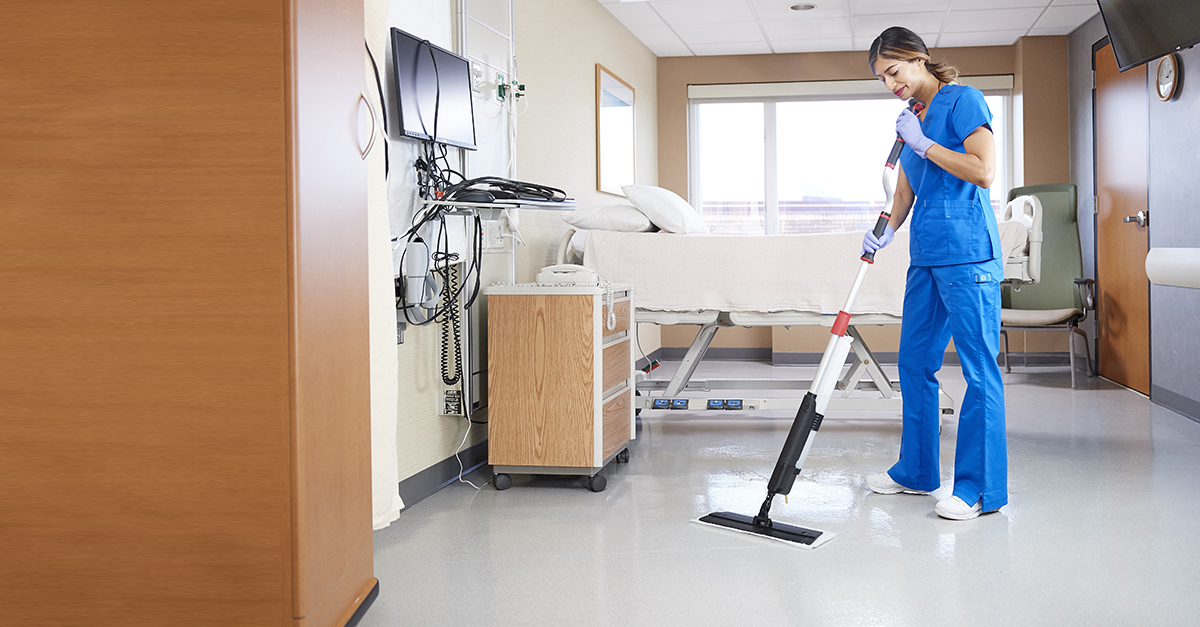

Still, the guidelines do suggest that if someone who has Covid-19 has been in a particular space within the last day, the area should be both cleaned and disinfected. “Doing a lot of spraying and misting of chemicals isn’t helpful.” “What this does very usefully, I think, is tell us what we don’t need to do,” said Donald Milton, an aerosol scientist at the University of Maryland. In most everyday scenarios and environments, people do not need to use chemical disinfectants, the agency notes. In most cases, cleaning with simple soap and water - in addition to hand-washing and mask-wearing - is enough to keep the odds of surface transmission low, the C.D.C.’s updated cleaning guidelines say. “Presence on a surface does not equal risk,” Dr. But it requires many things to go wrong: a lot of fresh, infectious viral particles to be deposited on a surface, and then for a relatively large quantity of them to be quickly transferred to someone’s hand and then to their face. Chan School of Public Health.Ĭatching the virus from surfaces remains theoretically possible, he noted.
Infectious disease cleaning penc update#
“The most important part of this update is that they’re clearly communicating to the public the correct, low risk from surfaces, which is not a message that has been clearly communicated for the past year,” said Joseph Allen, a building safety expert at the Harvard T.H. But the agency’s statements this week went further. has previously acknowledged that surfaces are not the primary way that the virus spreads. “The scientific basis for all this concern about surfaces is very slim - slim to none,” said Emanuel Goldman, a microbiologist at Rutgers University, who wrote last summer that the risk of surface transmission had been overblown. “However, evidence has demonstrated that the risk by this route of infection of transmission is actually low.” Rochelle Walensky, the director of the C.D.C., said at a White House briefing on Monday.

“People can be affected with the virus that causes Covid-19 through contact with contaminated surfaces and objects,” Dr.

updated its surface cleaning guidelines and noted that the risk of contracting the virus from touching a contaminated surface was less than 1 in 10,000. Facebook closed two of its offices for a “ deep cleaning.” New York’s Metropolitan Transportation Authority began disinfecting subway cars every night.īut the era of “ hygiene theater” may have come to an unofficial end this week, when the C.D.C. Researchers reported that the virus could survive for days on plastic or stainless steel, and the Centers for Disease Control and Prevention advised that if someone touched one of these contaminated surfaces - and then touched their eyes, nose or mouth - they could become infected.Īmericans responded in kind, wiping down groceries, quarantining mail and clearing drugstore shelves of Clorox wipes. Thus, all 3 stages of Lyme disease can be treated with antibiotic therapy, but some patients with late disease may not respond.When the coronavirus began to spread in the United States last spring, many experts warned of the danger posed by surfaces. Of 20 arthritis patients treated with intravenous penicillin G, 20 million U a day for 10 days, 11 (55%) were apparently cured. Seven of the 20 penicillin-treated patients (35%) were apparently cured, but all 20 patients given placebo continued to have attacks of arthritis (P less than 0.02). For the treatment of established arthritis (stage 3), 20 patients were assigned treatment with intramuscular benzathine penicillin (7.2 million U) and 20 patients received saline. Pain usually subsided during therapy, but a mean of 7 to 8 weeks was required for complete recovery of motor deficits. For neurologic abnormalities (stage 2), 12 patients were treated with high-dose intravenous penicillin, 20 million U a day for 10 days. However, with all three antibiotic agents, nearly half of patients had minor late symptoms. None of 39 patients given tetracycline developed major late complications compared with 3 of 40 penicillin-treated patients and 4 of 29 given erythromycin (p = 0.07). We compared phenoxymethyl penicillin, erythromycin, and tetracycline, in each instance 250 mg four times a day for 10 days, for the treatment of early Lyme disease (stage 1).


 0 kommentar(er)
0 kommentar(er)
